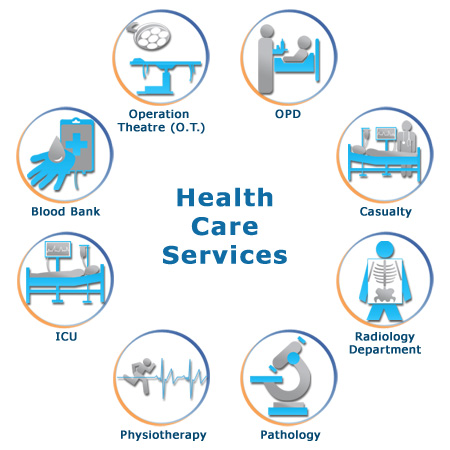
Advanced radiology services are available at Penn State Health Children's Hospital. Radiologists are an important part of any child's medical team, regardless of whether they need a routine scan or a PET scan. Radiologists use X-rays and PET scans as well as computed tomography (CT), magnetic resonance imaging (MRI) and PET scans to diagnose and treat a variety of conditions.
Family-centered care
Family-centered healthcare is built on the belief system that all children have the right and need to be provided with the best care. Practitioners are more able to provide the best possible care for children and their families if they consider the needs of their family members. This approach allows families to be involved in decision-making, which ultimately improves quality of life for all. Family-centered care practices not only improve the quality of life but also contribute to the well-being and health of children.

Specialized staff
Radiologists who specialize in pediatric imaging are employed at UCSF Benioff Children's Hospital. Children are provided with high-quality, safe care in a pediatric-focused setting by the hospital's pediatric radiology unit. It is one of the most prestigious hospitals in the country. Children's Health's radiology department also conducts research, and educates future radiologists in order to improve the lives of children around the globe. Do you want to work in the department of pediatric radiology? Check out their website to learn more about radiology careers.
Open MRI
The Children's Hospital of Philadelphia offers an open MRI that allows parents to accompany their child throughout the procedure. The procedure is safe for children, and they can use a safety belt. The machine will allow them to lie down on a bed that can be moved through the opening. While the procedure takes place, a technologist will inspect the child's bodies with a camera. They'll also take films or photographs of the child’s organs.
Sonography
Sonography is an important diagnostic tool that can diagnose many conditions. This type of imaging can be performed on children under 5 years. Children may experience some trauma, so the Hassenfeld Children's Hospital's staff and pediatric radiologists can provide gentle sedation. You will also find it less painful for your child to be scanned by the pediatric radiology department.

Nuclear medicine
Nuclear medicine is a type of diagnostic imaging that involves the use of radioactive materials (known as radiopharmaceuticals) to examine organ functions and metabolism. These substances can be injected into the body using an IV. Then, energy is released including gamma. These rays can be captured by a special camera which creates computer images of the organs and other tissues within the body. Both doctors and patients are able to benefit from the results of these procedures.
FAQ
What are the various health care services available?
Patients should know that they can access quality healthcare at all times. No matter whether you require an urgent appointment or routine check-ups, we are available to help.
There are many options for appointments. These include walk-ins, same-day procedures, emergency department visits and outpatient procedures. If you live far away from our clinic, we can also provide home health care visits. You don't have to come into our office if you are not comfortable. We'll make sure that you receive prompt care at your local hospital.
Our team includes nurses, doctors, pharmacists, dentists, and other professionals dedicated to providing excellent patient service. We want to make your visit as comfortable and painless possible.
How can I be a creative healthcare professional?
You have many options to become a creative healthcare professional. Many people begin their career as students. Others start out in business or engineering.
Some individuals choose to learn a course about a specific topic. Others choose to enroll in an elective course that explores diverse perspectives on health care and health.
No matter what pathway you choose, there are many ways to learn about topics in health and healthcare. These include readings, group discussions and assignments as well lectures. Workshops, conferences, seminars, and other events are also possible.
Once you have completed the program, your knowledge will allow you to work with patients, clients, colleagues and clients in any position within the health system.
You might even get a doctorate.
What is the role of the healthcare system?
A country's economy is only as strong as its health care system. It improves the quality of life and helps people live longer, more healthy lives. It creates jobs for nurses, doctors, and other medical professionals.
Health care systems help ensure everyone has access to quality healthcare services, regardless of income level.
It is important to understand how healthcare systems work if you're interested in a career as a nurse or doctor.
What should I know regarding vaccines?
Vaccines provide a very safe and effective way of keeping you healthy. Vaccines protect you from certain diseases. Vaccinations are usually given at specific times during childhood, adolescence, and adulthood. Your doctor will advise you when it is best for you to be vaccinated.
What does "health promotion" mean?
Health promotion is helping people live longer, stay well, and be healthier. It emphasizes preventing sickness and not treating existing conditions.
It also includes:
-
Eating right
-
Sleeping enough
-
exercising regularly
-
Staying fit and active
-
It is important to not smoke
-
managing stress
-
Keeping up with vaccinations
-
Avoid alcohol abuse
-
having regular checkups and screenings
-
Learning how to manage chronic diseases.
Statistics
- The healthcare sector is one of the largest and most complex in the U.S. economy, accounting for 18% of gross domestic product (GDP) in 2020.1 (investopedia.com)
- For instance, Chinese hospital charges tend toward 50% for drugs, another major percentage for equipment, and a small percentage for healthcare professional fees. (en.wikipedia.org)
- About 14 percent of Americans have chronic kidney disease. (rasmussen.edu)
- Consuming over 10 percent of [3] (en.wikipedia.org)
- Over the first twenty-five years of this transformation, government contributions to healthcare expenditures have dropped from 36% to 15%, with the burden of managing this decrease falling largely on patients. (en.wikipedia.org)
External Links
How To
What is the Healthcare Industry Value Chain?
All activities that are involved in providing healthcare services for patients make up the healthcare industry value chain. This includes all the business processes that occur within hospitals and clinics as well as the supply chains that link them to other providers, such as doctors, nurses, pharmacists or insurance companies. The end result is a continuum of care that begins with diagnosis and ends with discharge.
The value chain consists of four major components.
-
Business Processes – These are the tasks that individuals perform throughout the delivery of health care. A doctor might conduct an exam, prescribe medication and send a prescription to a pharmacy. Each step must be done correctly and efficiently.
-
Supply Chains: All the organizations involved in making certain that the right supplies reach all the people at the appropriate time. A hospital might have several suppliers. These could include lab testing facilities, imaging centres, pharmacies, or even janitorial personnel.
-
Networked Organizations - To coordinate these various entities, there must be some form of communication between the different parts of the system. Most hospitals have multiple departments. Each department has its own office and phone number. Employees will be able to access a central point for information and updates in every department.
-
Information Technology Systems- IT is vital in ensuring smooth business processes. Without it, everything could go down quickly. IT also allows you to integrate new technologies in the system. Doctors can connect to a secure network connection in order to integrate electronic medical records into their workflow.